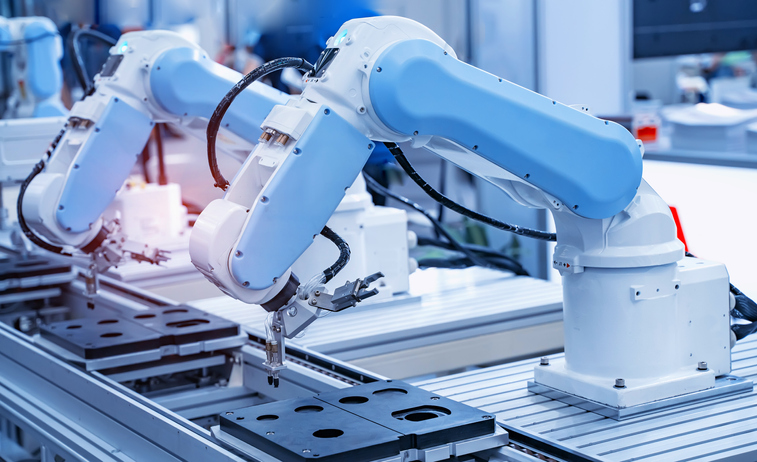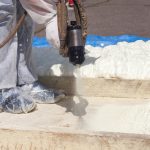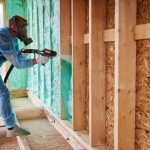The fourth industrial revolution, better known as Industry 4.0, is bringing changes to how manufacturing works. With digital integration leading the way in this movement, robotics, automation, and the Internet of Things (IoT) are becoming integral to the production of machinery and products. Industry 4.0 brings humans and robotics together to create a more efficient, cost-effective manufacturing process.
The implementation of Industry 4.0 through robotics and automation has benefitted manufacturers in all industries through increased productivity, decreased labor costs, and higher-quality products. Today, we’re diving into those benefits, along with exploring the implementation and application of Industry 4.0 breakthroughs in the polyurethane manufacturing industry.
Learn more about our equipment and capabilities: Contact us today to see what we can do for you and your manufacturing process.
The Benefits of Industry 4.0 and the Implementation of Robotics
Improved Productivity and Efficiency
With the demand for manufactured products increasing, companies need to be able to meet that rising level of expectation while still maintaining a high level of quality. The implementation of robotics and automation allows companies to continuously manufacture products without needing human intervention or labor. Using robotics increases output and repeatability while decreasing the risk of human error, making for a higher-quality, more consistent product.
Robots have great integration and monitoring systems in place which monitor for damage and processes, reducing downtime and increasing production. You don’t have to worry about shutting down production and losing profit when the integration and monitoring systems are used properly.
Improved Product Quality
Not only do robotics and automation produce more products, they also produce higher-quality products. When a machine is programmed to manufacture a product, it is given all of the information it needs to start and finish the process. If a machine is creating the product, human error cannot occur, making for a better, more reliable end result.
Automated robots can also constantly analyze their processes and identify issues within their systems and the product. These in-line, or real-time, inspections allow for improvement to the process, increasing efficiency, catching mistakes in the product early on and fixing any issues early on.
Cost Reduction
While investing in high-quality automated robotics is costly up-front, it can save money in the long run. The increased production rate and improved quality of the products will increase profit while ensuring potential labor shortages don’t impact your capabilities. Some other ways robotics and automation reduce costs include:
- Better resource usage
- Faster manufacturing
- Less production downtime
- Decreased waste of resources, materials, and products
- Lower maintenance costs
Fast Time-to-Market
With less human error, lower production variability, and real-time monitoring, manufacturers are able to assess their processes constantly, making adjustments quickly. Greater work visibility allows manufacturers to allocate resources to high-value products and processes, improve the cycle time and accelerate process improvements.
Enhanced Safety and Improved Working Conditions
Automated robotics can be used to perform tasks that are hazardous to employees, replacing humans entirely in certain dangerous environments. Allowing people to take a step back creates a more secure working environment and decreases repeatable, physically demanding tasks, ultimately making employees happier and safer. For example, allowing robots to take over certain components in the production of polyurethane foam can decrease human exposure to chemicals used in the manufacturing process.
Industry 4.0 and Robotics Have a Place in Polyurethane Manufacturing
From material handling, dispensing, and removal to product assembly, manufacturers have started using robotics and automation for many processes. Utilizing Industry 4.0 and robotics in polyurethane manufacturing is no different.
Integrating robotics into your manufacturing process for polyurethane should be easy. Luckily, Linden Polyurethane’s full line of manufacturing equipment can easily be integrated into your existing or upcoming Industry 4.0 system as is, or with minimal changes.
We are constantly striving to improve our programmable logic controllers (PLCs) on all of our machines to better their monitoring and automated decision-making. These changes will decrease machine downtime, streamline production processes and improve product quality.
Additionally, our robotic products for spraying equipment empower them to be on as much as needed, working even when humans aren’t. They also protect your employees from harsh chemicals and increase your production, keeping employees happy while spiking your profit.
Turn to Linden Polyurethane for Your Automation and Robotics Equipment
At Linden Polyurethane, we are dedicated to designing, manufacturing, and supporting polyurethane equipment for industries and organizations around the world. Each and every order we receive is custom designed, manufactured, and assembled at our headquarters to meet all of your specific needs.
Automated products are on the rise and we are advancing with it. Our high-pressure metering systems for polyurethane equipment can easily integrate into a robotics system and our CO2 Gas Infusion Blending Unit is fully automated, giving you the power to optimize your polyurethane operations.
We are continually striving to improve our machinery and implement more automated processes. If you are interested in learning more about how our machinery integrates with your Industry 4.0 environment, connect with our team today.





